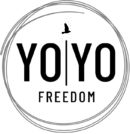It’s important to know upfront—this article isn’t about dieting or restricting, counting points or syns, or feeling hungry all day.
And the idea I’m offering isn’t right for everyone. But for many, following these steps can feel liberating and re-energising.
Here’s the question:
Have you ever tried planning your food for the day in advance?
If you feel strong resistance to that idea, I did too. And that was after years as a coach helping people find a way through bingeing and overeating to a place of deep healing.
So let’s get into why planning food can be so helpful and so liberating.
The benefits of planning food
Rather than creating a fresh set of food-police-style rules to rail against and beat myself up over, this is how I came to see food planning:
It allowed me to:
- eat enough so that I wasn’t hungry and felt safe knowing when the next food was coming (this is a key step in ending bingeng and overeating, especially after years of yoyo-dieting)
- personalise my food by planning to eat at the times that worked best for me
- choose foods that felt good in my body by making decisions about what to eat in advance and without being in a triggering situation
- be flexible by changing how much, what or when I ate the next day if I wanted to, just as long as I planned it in advance
- free up my mental resources by dropping the questions about what to eat
- get really specific about my on-going challenges by pinpointing when and why I wanted to eat in a way that didn’t leave me feeling good
Food planning can act as a crash course in bringing all the stuff that needs to be looked at right to the surface!
If you want to give it a go, these are the steps:
1. Choose a way of eating that feels good in your body and your life.
Imagine no one is dictating what you should eat. My guess is you’ve tried enough different plans already to have a fair idea of your preferred foods, including how regularly you’d like to—or need to—eat them.
Ask “what would I really like to include if I wasn’t following someone else’s rules?”
- A small bunch of grapes after lunch can seem revolutionary if you’ve been told keto is the only way, but it can feel amazing!
- A glass of dry white wine in the evening helped me kick my chocolate habit without derailing me. It’s not for everyone, but it worked for me at a time it counted.
If you’re looking for additional guidance, click her to listen to The YoYo Freedom Podcast, episode #005: How to find the foods that work for you.
2. Map out a loose plan of your food for a day
Here are some checks to ensure you’re on the right track:
My plan offers:
▢ A way of eating I could continue in the long term (not just for a few weeks or a couple of months)
▢ Foods I enjoy
▢ Enough to stop me being hungry
▢ Achievable food prep that I can easily fit in
▢ A “safety net” in case I’m hungry (as you start out, build in optional snacks for certain times in the day—it will help calm and reassure your system which is critical as you shift away from overeating)
3. Plan your food in advance
Plan your food for the day either the night before or as one of the first things you do when you wake up.
4. Make time to review
No judgement here, just a data-gathering exercise.
At the end of the day, ask yourself what went well, what was a challenge and what you’d like to do differently.
Create space for adjustments that will help support you and build them into tomorrow.
5. Identify areas to focus on as you move forward
Ask yourself,
- When was it hard to stick to the plan?
- What was coming up for me at that time?
The insight you gain from asking those questions will be golden in revealing where to focus your attention as you continue your healing journal to stop bingeing and overeating in the long term.
In Summary
Planning out your food in advance doesn’t have to be limiting.
Instead, it shows you exactly where you’re using food to help smooth over some other issue in your life.
What you uncover will be the key to ending bingeing and overeating.
And, in so many ways, following a food plan can end up being both energising and liberating!
